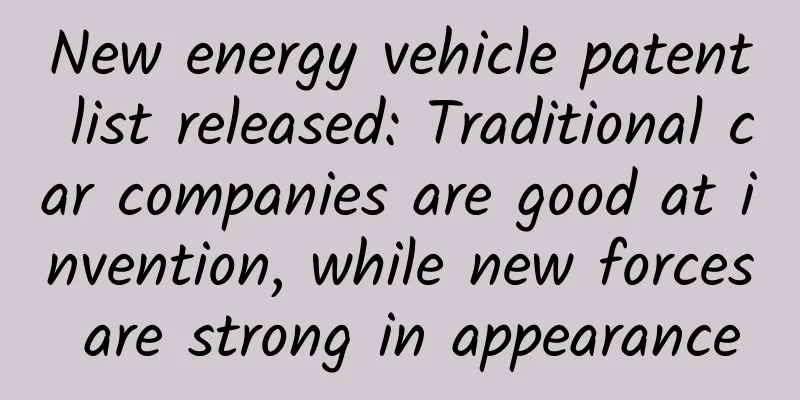How do we control the rocket after it's launched?

|
I said before that rockets and carrier rockets are exactly the same in essence, but many people disagreed. Well, at least if it is a carrier rocket, it should be able to control itself and allow the spacecraft it carries to enter orbit accurately. To know how to control a rocket, we must first know what actions we need to control the rocket. Just like a car, what can we control it to do? Opening the sunroof, playing music, turning on the turn signal, turning on the windshield wipers, these are not the core functions of the car, what are the core functions? Acceleration, deceleration, turning left, turning right. The same is true for missile flight. In terms of movement, forward, backward, left, and right are the most basic. For an aircraft, it has two more than a car, that is, up and down. Up and down, left and right, front and back, these are called translational degrees of freedom in mechanics. How many degrees of freedom are there for up, down, left, right, front and back? Not six, but three, because in mathematics, down is equal to negative up, right is equal to negative left, and back is equal to negative front, so three degrees of freedom can be used to describe them. When we control an aircraft, we ultimately want to control these three degrees of freedom to keep it where it should be. But in order to control these three degrees of freedom, generally speaking, we need to use three other degrees of freedom, namely pitch, yaw and roll, which are called rotational degrees of freedom. For example, if a rocket wants to adjust its trajectory upward, it will usually lift its head first. In this way, we will find that on the one hand, the direction of its jet is more downward, and it will gain more upward force. On the other hand, if there is still air around at this time, its angle of attack will also increase, which will also give it more upward lift, and it will go up. You ask me if I can directly spray the jet sideways to make it move up, down, left, and right? Of course, it is possible, but it is more gas-consuming and expensive. It is very good for weapons, but it is not worth using it on launch vehicles. Most launch vehicles control the rotation in the three directions of pitch, yaw, and roll. The picture comes from Tuchong.com As for how to control the rotation in these three directions, there are many ways. Let's first look at the ancestor of modern rockets, the V-2 missile. On the V-2, there are two ways to control itself. One is on the outer end of its wing, which is the deflectable aerodynamic control surface. When the horizontal control surface deflects up and down, the rocket will pitch, and when the two vertical control surfaces deflect left and right, the rocket will yaw left and right. If the deflection directions of the two relative rudders are inconsistent, the rocket will roll. Since it is called aerodynamic control surface, it must use aerodynamics. The force generated by aerodynamics can generally be obtained through the following formula: F=1/2ρv²×C×S. You still don't need to fully understand it. You just need to know that the first part is called dynamic pressure. The larger the dynamic pressure, the greater the aerodynamic force. The two quantities in dynamic pressure are flight speed and air density. In other words, if the rocket flies too slowly, or the rocket flies too high and the air is gone, then the aerodynamic force will also disappear. Flying too slowly mainly happens when it just leaves the ground, and flying too high is the normal state of the rocket. Therefore, the V-2 has another set of components that control itself, which are the four pieces behind the nozzle. These four pieces are called gas rudders. When they deflect, they will deflect the gas ejected by the engine, thereby generating a control torque. Because the object to be deflected is relatively small, this method has a simple and convenient structure. However, this gas rudder has to withstand the erosion of rocket gas, so the material requirements are relatively high, and the control efficiency is very general. In addition, if you just block behind the nozzle, there will be thrust loss. For the V-2 missile, the thrust loss of these gas rudders is about 3% to 5%. Our Long March 1 carrier rocket, which launched the Dongfanghong 1 satellite, also used this type of gas rudder. To further improve the control efficiency, you can use a swing engine, that is, let the rocket engine directly deflect, so that the ejected flames are also deflected, and this deflection can make the rocket rotate. We started to use this kind of swing engine from the Long March 2. Its first stage has four engines, and each engine can swing along the rocket tangent. When the upper and lower engines swing left and right, the rocket will yaw left and right. When the left and right engines swing up and down, the rocket will pitch up and down. If the left and right or up and down swing directions are inconsistent, the rocket can roll. The second stage of the Long March 2 only has one main engine. How to control it? In fact, the main engine of the second stage of the Long March 2 does not swing at all. Instead, four small engines are added around it, which are made to swing according to the same rules as the first stage. These four small engines are called wandering engines, or wandering engines for short. Whether it is the first stage of the Long March 2 or the second stage of the floating engine, they can only swing in one direction. If the engine can swing in both directions, it will be easier to control. For example, the core stage of the Long March 5 and Long March 7 only has two engines, but these two engines can swing in both directions, so they can control both pitch and yaw. If the two engines are differential, they can also control roll. Although the second stage of the Long March 7 has four engines, only two of them swing, and the other two can be directly welded, relying on this two-way swing technology. The swing of the engine must require a control component to turn it, and the larger and heavier the swinging part is, the greater the force required for this control component, and greater force generally means greater weight and size under the same conditions, so we want to make the swinging part of the engine as small as possible. So in 2017, our country successfully tested the pump-back swing technology. As we know from the last class, a large part of liquid rocket engines is the fuel pump. Before, these fuel pumps and other things had to swing together. The so-called pump-back swing means that the fuel pump and other parts do not swing, and only the back part swings. This structure is more compact and requires a smaller actuator, which can save a lot of weight and space. As can be seen from the name, whether it is pump-front swing or pump-back swing, it must be referring to liquid rocket engines, because as mentioned before, solid rockets do not have pumps. For solid rockets, this technology is called a swinging nozzle, which means that only the nozzle that ejects the jet swings. In recent years, my country has seen the emergence of some small launch vehicles that use solid rocket engines. They are highly maneuverable and inexpensive, such as Jielong and Kuaizhou. If we look back at the latest launch video of Kuaizhou-11, we will find that it is somewhat different from other rockets. It has a small tip on its head, and after takeoff, this tip will spray fire to the side. In fact, the fire here is called a fixed attitude control engine. These small engines spray jets toward the side of the rocket, but it does not directly make the rocket move sideways, but still makes the rocket deflect. On the Kuaizhou, the four wire-like things underneath it also play this role. This thing is not a wire mesh, but a grid rudder. In essence, it is the same as a general aerodynamic control surface. Its advantage is that it can generate greater aerodynamic force with higher efficiency under the same volume. This is because it is equivalent to stacking the areas that generate aerodynamic force together to form a net, and this net can also be folded up to reduce the volume of the aircraft. SpaceX's Falcon 9 is controlled by such a control surface during recovery, and the head of our manned rocket Chang'e 2F also has such a grid rudder, which will unfold and start working when the escape life-saving system is activated. Of course, as I just said, aerodynamics can only be achieved when there is air and speed, so the grid rudders on these rockets can only produce control effects at a certain speed and altitude. Okay, have you learned how to control a rocket? This article is a work supported by Science Popularization China Starry Sky Project Author: Mr. Gou Sheng Reviewer: Zhou Binghong (Researcher at the National Space Science Center, Chinese Academy of Sciences) Produced by: China Association for Science and Technology Department of Science Popularization Producer: China Science and Technology Press Co., Ltd., Beijing Zhongke Xinghe Culture Media Co., Ltd. |
<<: "Now I am Death": The True Life of Oppenheimer
Recommend
Tik Tok live streaming experience and skills, what are the skills for Tik Tok live streaming?
With the rise of Douyin live streaming , more and...
C919 soars on a new route! China's large aircraft's soaring journey
Author: Duan Yuechu and Huang Xianghong Under the...
Which three “mobile industry chains” has WeChat created?
[[119993]] Editor's Tips: One of the criteria...
New brain-like network is here! Chinese scientists build bridges between artificial intelligence and neuroscience
Author: Huang Yanhong, Huang Xianghong, Duan Yuec...
Private Domain Traffic Operation and Construction Strategy
If we compare private domain traffic to a fish po...
Peachtree's Practical Skills for Opening a Store Without a Source, Earn 5,000+ Per Month as a Part-time Job
Course content: 1. Xianyu practical skills: how t...
@毛絮絮: Don’t be too “floating”! To reduce flying catkins in cities, these 9 points are the key →
Willow catkins are "floating" again, ri...
What exactly is Mercury retrograde?
You often see this kind of statement on the Inter...
28 thoughts on marketing, operations, copywriting, and new media!
1 What is a brand? It seems that there are very f...
If your product has no unique features, how can you attract users’ attention?
Among a bunch of products with similar selling po...
Deloitte: Global Automotive Consumer Survey 2025
199IT original compilation As interest in interna...
Cancellation and exceptions in coroutines | Introduction to core concepts
In previous articles, we shared with developers s...
Is there any scientific basis for the saying “Money can’t buy you slimness in old age”?
Hey, old folks, have you ever heard the old sayin...
At a cost of $10 billion, a 40-year-old problem remains unsolved
As physicists face three decades of fruitless sea...
Foxconn will invest another 1 billion yuan to return to Henan and develop the electric vehicle industry. Let's wait and see.
Don't let Foxconn get away! For reasons that ...









